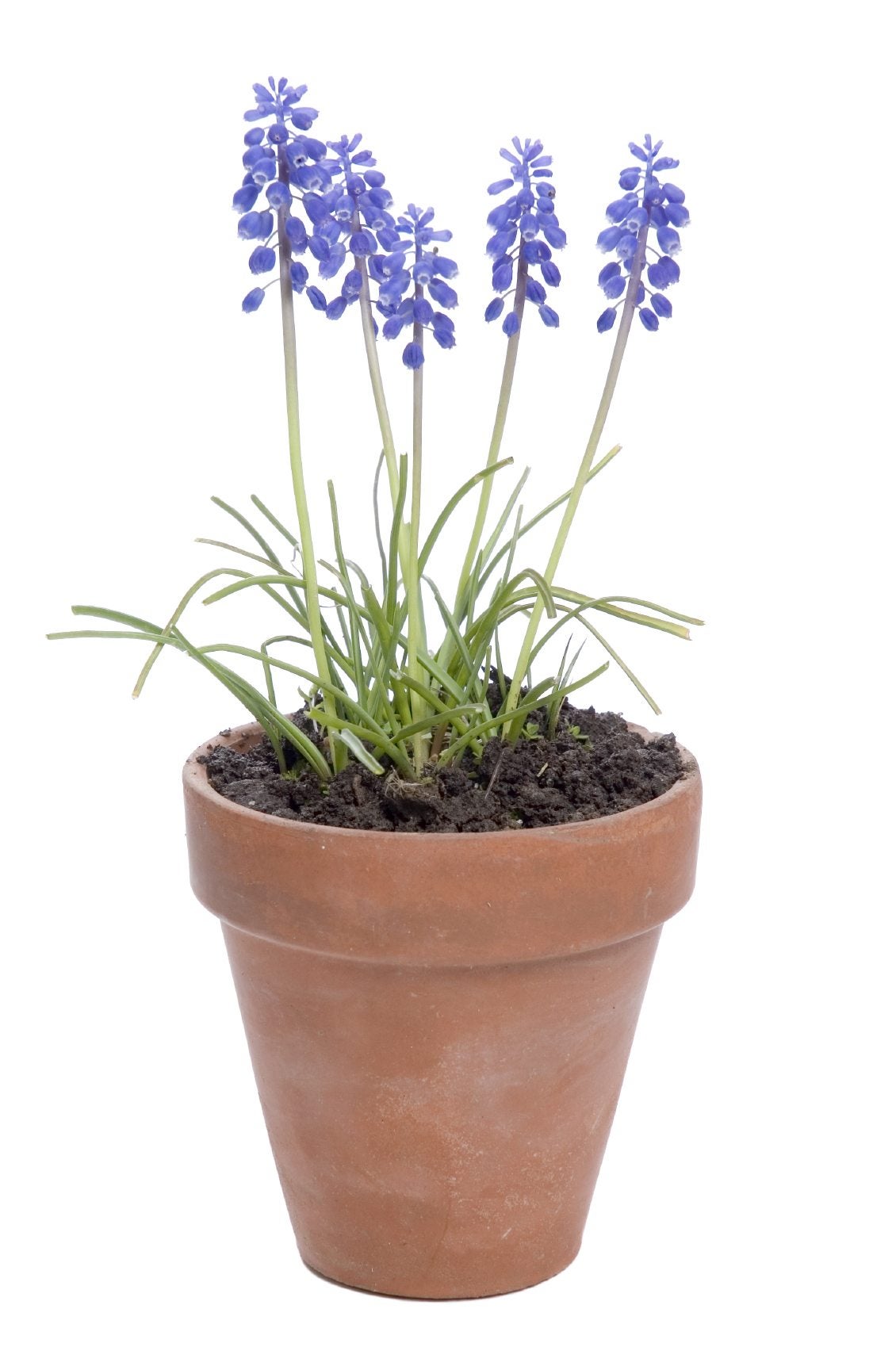Growing Grape Hyacinth In Containers: How To Plant Muscari Bulbs In Pots


Grape hyacinths are not, contrary to popular belief, related to hyacinths. They’re actually a type of lily. Like hyacinths, though, they have a shockingly beautiful blue color (except when they’re white) and a heavenly scent. They also grow very well in pots, and you may want to keep them inside for the joyful hint of spring they bring. Keep reading to learn about grape hyacinth container planting.
How to Plant Muscari Bulbs in Pots
Grape hyacinth, also called Muscari, grows bunches of tiny, delicate, blue flowers that give off a faint, grape-like smell. The plants are small, and pair well in containers with other small bloomers like pansies or even grass. Plant the bulbs in the autumn 3-4 inches (7.5-10 cm) deep and 3 inches (7.5 cm) apart. The dimensions of the container don’t really matter as long as you can follow those spacing requirements. Make sure your potting material and container are very well-draining. Container-grown Muscari hates to be waterlogged, and particularly in their early stages can rot if kept too wet. Give your grape hyacinth in a pot time to put down roots and grow its foliage - it won’t actually flower until the spring.
Container Grown Muscari Care
Early in the spring is when grape hyacinth in containers really shine. Put them in partial to full sun and they’ll produce beautiful, minuscule blossoms that can be cut sparingly for striking, tiny arrangements. The flowers should last through the spring. When summer approaches and the blossoming peters off, don’t stop watering the plant! It’s important to let it live out its natural lifespan to collect energy from the sun for next year’s growth. About an inch (2.5 cm.) of water per week should keep the foliage healthy until it dies back naturally. At this point, you can cut it back and wait for your grape hyacinth in a pot to grow afresh in the fall.
Sign up for the Gardening Know How newsletter today and receive a free copy of our e-book "How to Grow Delicious Tomatoes".

The only child of a horticulturist and an English teacher, Liz Baessler was destined to become a gardening editor. She has been with Gardening Know how since 2015, and a Senior Editor since 2020. She holds a BA in English from Brandeis University and an MA in English from the University of Geneva, Switzerland. After years of gardening in containers and community garden plots, she finally has a backyard of her own, which she is systematically filling with vegetables and flowers.